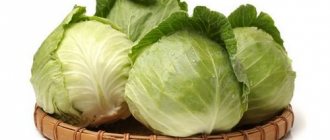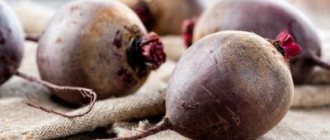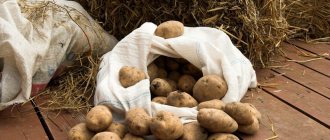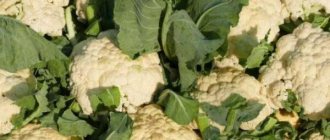How and how long to store peeled potatoes
Excess peeled potatoes are most often stored in the refrigerator. This is an easy way to store potatoes without skins for a short time. If it is necessary to preserve tubers for a day, then housewives use several methods :
- immersed in cold water;
- scalded;
- placed in the freezer.
The main problem with storing potatoes without peels is that the tubers quickly darken . The rate of darkening depends on the variety, the substances contained in the potato and the fertilizers used when growing the vegetable. A vegetable “overfed” with fertilizers darkens quickly.
How long can peeled potatoes be stored in cold water?
Potatoes without skins keep well in cold water . Tubers that are placed in a container of water immediately after cleaning will not turn black and will remain fresh for up to four hours. After this time, substances that affect the taste of the potato dissolve in the vegetable. Cut potatoes are stored for less than four hours; after 1-1.5 hours they lose their taste, so it is recommended to store the tubers whole.
How long do raw peeled potatoes last in the refrigerator?
Potatoes, which are folded whole tubers in a container with water, are stored in the refrigerator for up to 24 hours . The main thing is that the water completely covers the peeled vegetables. Before cooking potatoes that have been stored in water at temperatures from 0 to +6°C, it is recommended to rinse them thoroughly in running water.
In the freezer at a temperature no higher than -18°C, potatoes without skins can be stored for up to a year . To freeze a starchy vegetable, the tubers are placed in a plastic bag or wrapped in thick cling film.
It is important that the freezer contains vegetables, divided into portions , which will immediately go from the freezer into warm water and cook. You cannot defrost the vegetable; storing it after defrosting is also not recommended.
Reference. Tubers without peel are frozen not only whole, but also in pieces. The product is wrapped in cling film and placed in a bag or plastic container. The main thing is to follow the principle of dividing the workpiece into portions.
Storage at room temperature
At room temperature, when the water in which the peeled tubers lie is not cold , potatoes without peels are stored for about two hours. It is recommended to lay the vegetables so that the water covers them completely, otherwise the exposed areas will darken.
The shelf life of peeled potatoes at room temperature can be extended to six hours if you store the peeled vegetable outdoors without water. To prevent the product from spoiling, after cleaning it is scalded with boiling water, then placed in a container with a lid.
It can be useful:
Storage conditions for sauerkraut
How to Store Sliced and Peeled Pumpkin
Conditions and methods for storing garlic in an apartment
Storage time for peeled vegetables
Not all types of vegetables can be stored in the refrigerator under the same conditions after cutting.
For example, tomatoes, cucumbers and avocados don't keep well once cut, so it's best to keep these vegetables intact until you need them.
| Vegetable name | Shelf life at room temperature | Shelf life in the refrigerator | Shelf life in the freezer |
| Garlic | 12 hours | up to 2 days | 8 months |
| Carrots, potatoes, beets | 8 ocloc'k | 24 hours | 9-12 months |
| Eggplant | 8 ocloc'k | 48 hours | 5-9 months |
| Bulb onions | 8 ocloc'k | 48 hours | up to 6 months |
| Corn, beans and other legumes | 24 hours | 5-7 days | up to 12 months |
| Pumpkin, zucchini, turnip | 8 ocloc'k | 3 days | up to 12 months |
| Pepper | 8 ocloc'k | up to 48 hours | 6-8 months |
| Cauliflower, broccoli | 12 hours | 3-7 days | 5-9 months |
| Tomatoes cucumbers | till 12 o'clock | up to 24 hours | Do not freeze |
| Radish, daikon | up to 8 o'clock | up to 24 hours | Do not freeze |
Leafy greens (dill, parsley), beet tops, are perfectly stored in the freezer. See more details here. To do this, dry it thoroughly and chop it finely. Place in freezer containers, cover with lids and immediately place in the freezer.
Peeled potatoes: how to keep them from browning
To prevent the peeled tuber from darkening, it is immersed in cold water or doused with salted boiling water . Both methods are used to prevent contact of the vegetable pulp with oxygen.
Why do peeled potatoes darken and lose their taste?
After peeling, potatoes quickly darken and become unsuitable for cooking. Tubers contain the enzyme tyrosinase and the amino acid tyrosine, which is one of the essential amino acids . Tyrosinase is needed to capture oxygen and accelerate oxidative processes. Tyrosine has no color, but after oxidation it becomes bluish-brown.
The more nitrogen compounds a plant receives during cultivation, the more tyrosinase is included in the tuber pulp. Vegetables that have been over-fertilized with nitrogen will darken within minutes of peeling. The organic, nitrogen-free vegetable stays light for up to thirty minutes.
In addition to the enzyme that affects color change, the vegetable contains a lot of useful substances that are washed out of it when kept in water for a long time. This process also negatively affects the taste of the product.
The table provides a detailed list of vitamins included in potatoes.
| Vitamins | Chemical name | Content per 100 g | % daily requirement |
| A | retinol equivalent | 3 mcg | 0% |
| B1 | thiamine | 0.12 mg | 8% |
| B2 | riboflavin | 0.07 mg | 4% |
| C | ascorbic acid | 20 mg | 29% |
| E | tocopherol | 0.1 mg | 1% |
| B3 (PP) | niacin | 1.8 mg | 9% |
| B5 | pantothenic acid | 0.3 mg | 6% |
| B6 | pyridoxine | 0.3 mg | 15% |
| B9 | folic acid | 8 mcg | 2% |
| H | biotin | 0.1 mcg | 0% |
The content of minerals in potatoes is detailed in the table.
| Minerals | Content per 100 g | % daily requirement |
| Potassium | 568 mg | 23% |
| Calcium | 10 mg | 1% |
| Magnesium | 23 mg | 6% |
| Phosphorus | 58 mg | 6% |
| Sodium | 5 mg | 0% |
| Iron | 0.9 mg | 6% |
| Iodine | 5 mcg | 3% |
| Zinc | 0.36 mg | 3% |
| Selenium | 0.3 mcg | 1% |
| Copper | 140 mcg | 14% |
| Sulfur | 32 mg | 3% |
| Fluorine | 30 mcg | 1% |
| Chromium | 10 mcg | 20% |
| Manganese | 0.17 mg | 9% |
Potatoes are rich in essential amino acids.
| Essential amino acids | Content per 100 g | % daily requirement |
| Tryptophan | 28 mg | 11% |
| Tyrosine | 0,048 | 1,1% |
| Isoleucine | 86 mg | 4% |
| Valin | 122 mg | 3% |
| Leucine | 128 mg | 3% |
| Threonine | 97 mg | 17% |
| Lysine | 135 mg | 8% |
| Methionine | 26 mg | 2% |
| Phenylalanine | 98 mg | 5% |
| Arginine | 100 mg | 2% |
| Histidine | 30 mg | 2% |
How to determine the suitability of peeled potatoes
A thick, cloudy film on the surface of the water in which the vegetable lies indicates that it has begun to sour; such potatoes cannot be eaten . Another sign that a vegetable is unsuitable for eating is its softness. If your finger leaves a dent on the tuber, it means the product has lost too many valuable substances and should be thrown away.
A characteristic sour or putrid smell also indicates that the peeled tuber has disappeared . Dark or burgundy spots indicate that the pulp has begun to oxidize; it is also better to get rid of such vegetables.
Attention! After storage, peeled potatoes suitable for eating should be firm, even milky in color (shades vary depending on the variety), without dark areas and an unpleasant odor.
Correct storage technology
The shelf life will vary depending on the type of vegetables and the container in which they are stored. Some need closed containers and humidity control, others need containers with partially preserved breathability, others need open containers, or, on the contrary, with tight-fitting lids.
At room temperature
The shelf life of peeled potatoes and other root vegetables is short. They lose moisture very quickly and undergo oxidation by oxygen at room temperature; they must be stored in water.
- Potatoes and eggplants can be soaked in a solution of citric acid. To do this, dissolve 1/2 tsp. in a liter of cold water and pour it over the vegetables.
- Leafy vegetables and herbs should be placed in a glass of water, like a bouquet.
- Wrap the onions, garlic, ginger, leeks, cucumbers and the container tightly in cling film or aluminum foil.
Tomatoes do not like the climate of the refrigerator, so store them in a bright place with the stems facing up. It is better to sprinkle the cut slices with salt and cover with foil.
In a refrigerator
It is important to keep all food in the refrigerator sealed. And do not wash before storing.
- Place leafy vegetables and herbs in a single layer on a paper towel and allow to dry thoroughly. Then carefully roll the contents into a new towel and store in a ziplock bag without sealing it.
- Root vegetables require moisture to be stored, so place a damp paper towel at the bottom of the container and trim the tops.
- Store aromatic chopped vegetables (onions, garlic, etc.) in an airtight glass container. It is better to cut off the green part of the leek.
- Cabbage likes to absorb foreign odors; it is better to wrap it in a paper towel and place it in an airtight container.
- To prevent overheating, place the tomato halves cut side down. Store for no more than 24 hours.
- It is better to store eggplants and potatoes in a container with water for no longer than a day. Place the zucchini and pumpkin parts in a container or foil in one layer so that they do not touch.
- Peppers are sensitive to cold and may freeze. Store it in a paper towel placed in a container or bag away from other vegetables.
Do not allow storage temperatures to be too low; vegetables may freeze, which will destroy their texture and alter their taste. The recommended humidity level should be 85-90%.
In the freezer
Many vegetables are blanched before freezing. To do this, immerse them in boiling water for 30 seconds to 5 minutes, and then immediately rinse them under cold water.
See also: How to properly use sheet gelatin
After this, transfer the vegetables to paper towels and let them dry from excess moisture. Transfer to containers or freezer bags and place in the freezer.
- To extend the shelf life of ginger and garlic, grate them finely and freeze them in an ice cube tray. As needed, simply remove the cube and toss it directly into the pan. In a similar way, you can freeze a mixture of seasonings and aromatic herbs.
- Freeze beets, carrots, peppers, broccoli and cauliflower using the quick freeze function.
- Pre-freeze the beans and corn on a board or plate and only then transfer them to freezer bags.
- Store sorrel and spinach leaves in as airtight a container as possible.
❌ Freezing white cabbage is not the best idea; for longer storage, it is better to pickle or salt it. If for some reason the cabbage was frozen, find out here whether it can be revived and what to cook from it.
If defrosted frequently, vegetables will lose their texture and become soggy, so always freeze in portions.
Video - how to freeze vegetables for the winter











